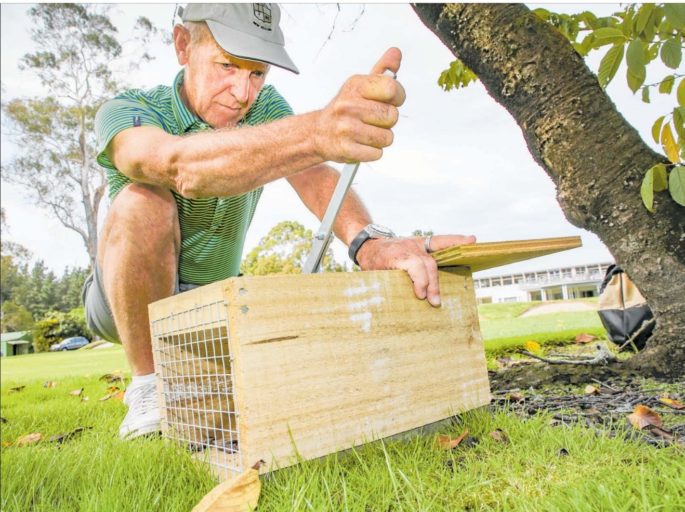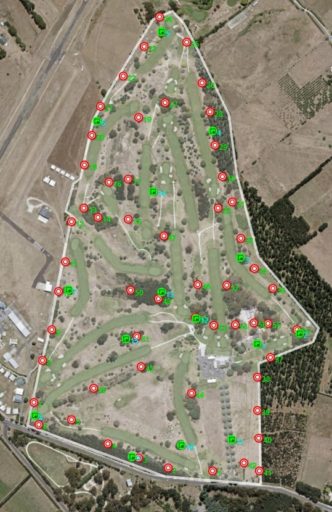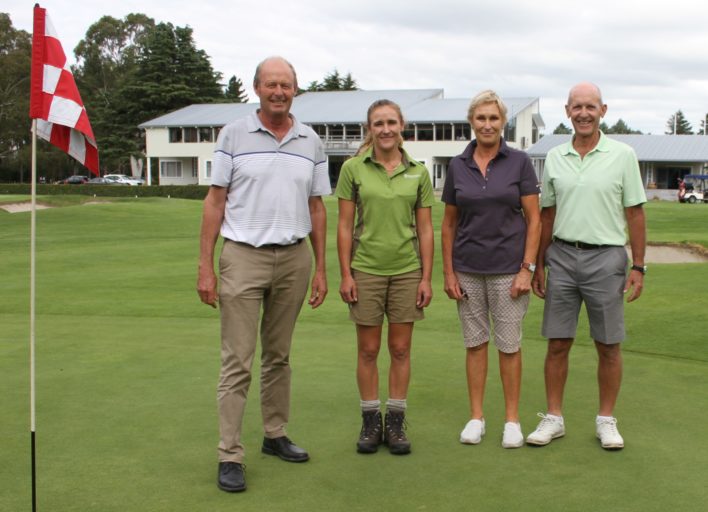There’s a stoat stalking the greens at Hastings Golf Club and members are determined to catch it. In fact, the stealthy stoat has inspired the start of a comprehensive trapping programme for other introduced predators, including any rats, possums or hedgehogs hanging out on the wilder fringes off the fairway. Trapping project coordinator, Murray McNae, explains how it all began.

“In our monthly Management Committee meeting in October last year, our head Greenkeeper mentioned he had seen a stoat and was keen to know the best way how to get rid of it, so I volunteered to research the matter,” says Murray. “I looked at the Predator Free website and also what was going on in Hawke’s Bay, and then thought it would be a good initiative to have the club go totally Predator-Free.”
Murray researched traps and checked out trapping videos to learn more.
“In looking at YouTube videos and other material I honed in on the DOC 200 trap as the most appropriate for our purposes. I found through the research that the DOC 200 traps should be placed about 100m apart, so I calculated we would need approximately 40 for the perimeter and I just guessed around another 10 sprinkled throughout the course.”
The next issue for Murray and the Hastings Golf Club was how to fund 50 traps.
“I contacted one of the recommended suppliers – Haines Pallets – and obtained a quote for bulk purchases and applied for a grant through the Predator-Free website but was told the grant programme wasn’t due to resume until a few months into 2019,” Murray explains. “I also made contact with the Hawke’s Bay office of DOC, and the Hawke’s Bay Regional Council, but neither of those organisations were able to provide funding support.”
Undaunted, Murray and his fellow golfers came up with an alternative way to fund their fledgling trapping programme – trap sponsorship.
“I felt this would be a good opportunity to go to the members for assistance, in the form of a donation for either a full trap, or sharing half a trap with another member,” says Murray. “We have approximately 900 members, of whom over 50% are full-playing, so I felt that we would get a good response and be able to get close to the target of 50 traps.”
Murray submitted his background research and suggested proposal to the Management Committee in November, and it was accepted. Next, the proposal was put to members – to an enthusiastic response.
“We got a great reception from members – better than I had anticipated actually,” says a delighted Murray. “We reached our stated target of 50 traps quickly, in fact we got 53, plus another 3 donated traps, making 56 altogether.”
With such a positive response, Murray was keen to keep Hastings golfers involved in the project.

“Given the level of support from the members, and the positive feedback we had, I felt that keeping the members involved rather than just accepting the donation and laying the traps was very important,” he explains, “So I decided we would number each trap, assign that number randomly to a donor member, then tell each of them where “their trap” was located, and encouraged them to check it each time they walked the course. We would also publish a regular scorecard of “kills” and keep everyone updated. Our General Manager Michelle Campbell suggested we would award a prize of a dozen golf balls for the most kills at the end of the year.”
Being new to trapping, Murray and the Golf Club have appreciated the support and expert advice they’ve received from other organisations.
“Jessi Morgan (Predator Free NZ Trust) was very helpful with her suggestions and encouragement early on. Rod Dickson of Hawke’s Bay Regional Council also gave me useful advice on placement of traps, baiting options, and referral to DOC,” says Murray. “Kellie Mayo of DOC has been great. She and her colleague visited me at the course one evening and we toured around where she told me useful spots for placement of traps.”
Kellie also referred Murray to another contact in Hawke’s Bay Regional Council for possum control.
“That subsequently resulted in the HBRC including us in their PCA (Possum Control Area),” says Murray. “They installed 15 bait stations throughout the course at no cost to us, although we will maintain the bait stations going forward. Kellie also referred our programme to the Hawke’s Bay Ornithological Society who are going to measure bird life numbers over time. They are due to visit the course in May for the first count.”

The predator control programme has now been operational for about 6 weeks.
“There is huge interest from members who have donated traps,” says Murray. “I get constant queries about how their trap is doing, and everyone is very enthusiastic about the programme. And no, we haven’t yet caught that stoat after being going 6 weeks!”
The usual suite of introduced predators are all thought to be present at the Golf Club.
“We have rats, possums, mice, hedgehogs, feral cats and a member told me just today they saw a stoat,” says Murray. “We have 56 DOC 200 traps, 15 bait stations, and we’re about to deploy 3 Timms traps for feral cats,” he says. “Because we’re out in the country and a long way away from any houses, we don’t run the risk of catching domestic cats, so we felt trapping was the best solution for us.”
When it comes to lures, Murray is offering predators a tempting range of favourite foods.
“In the DOC 200 traps we place rabbit jerky, chocolate buttons, and recently we’ve added a daub of peanut butter. The HBRC contractor who installed the bait stations also suggested spraying the cage with fish oil, so I’ve done that as well.”
Rabbit, chocolate, peanut butter and fish oil – what predator could resist…
“We’ve been going 6 weeks now and the “official” total is 35 kills,” says Murray. “During the two-week period to lay all the traps, another 4 rats and 2 hedgehogs were caught. But for our own purposes of our “scorecard”, we’re saying the official total is 35 – 23 rats, 4 hedgehogs and 8 mice.”
The initial 6 catches were excluded in the interests of fairness because the traps that were set early gave more “advantage” to the owner in terms of the annual prize.
Murray is already thinking about how the Golf Club can encourage more birds to the course, as predator numbers are reduced.
“We are planning to install more water on the course for birds,” he explains. “I’m working on a plan to construct two 10m x 4m ponds, with water lilies and a solar-powered water fountain/filter.”
There’s now a volunteer team helping Murray with the project too.
“We went to the members asking for volunteers to help with two-weekly inspections,” says Murray. “Two women and 3 men volunteered, so along with me we have 6. I’ve set up a shared Google calendar so each of our team can decide for themselves what day/time during the designated week they wish to do it, and others can plan accordingly.
Murray didn’t want to make the checking routine too onerous so mapped out two “zones” for volunteers to check.
“It’s basically the top and half and bottom half of the course with a list of traps to be inspected in sequence for efficiency. The suggestion is that one of the team can nominate only one zone if they wish. A checking/resetting round for one zone only takes about an hour or less, so that works really well. All the team are very keen!”
Not only are the trapping team helping out local wildlife, they’re enjoying the challenges too.
“It’s fun!” says Murray. “I’ve started thinking about adjustment of placement of traps as we seem to get best results from traps placed in bushy areas rather than around the perimeter, although I think it’s still too soon to take action on changes. Certain bait stations have had great consumption of the Brodifacoum pellets early on.

